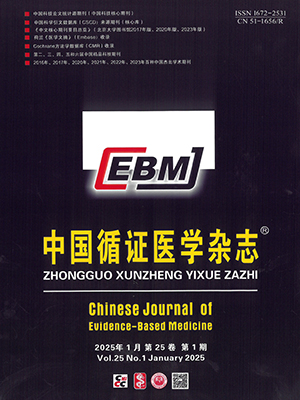| 1. |
张雨薇, 欧袁伟翔, 熊真真, 等. 2014年糖尿病重要临床指南和共识进展回顾. 中国循证医学杂志, 2015, 15(8): 867-872.
|
| 2. |
刘蔚, 纪立农. 2011年全国糖化血红蛋白检测仪器现况调查. 中国糖尿病杂志, 2013, 21(8): 682-685.
|
| 3. |
卫生部临床检验中心. 糖化血红蛋白实验室检测指南(2011年版). 中国糖尿病杂志, 2013, 21(8): 673-678.
|
| 4. |
WS/T402-12-2012. 临床实验室检验项目参考区间的制定. WS, 2012.
|
| 5. |
CLSI C28-A3. Defining, establishing, and verifying reference intervals in the clinical laboratory; approved guideline-third edition. CLSI, 2010.
|
| 6. |
中华人民共和国卫生部医政司. 全国临床检验操作规程. 第三版. 南京: 东南大学出版社, 2006: 82-99.
|
| 7. |
宋秀国, 唐振起. 渤海新区2687例成人糖化血红蛋白水平分析. 检验医学与临床, 2013, 10(4): 431-432.
|
| 8. |
马小红, 庄爱周, 李萌, 等. 杭州地区部分人群糖化血红蛋白的调查研究. 中国卫生检验杂志, 2012, 22(1): 144-148.
|
| 9. |
王奇军, 陈佩, 曾琴飞, 等. 宁波地区健康成人糖化血红蛋白水平调查. 中国卫生检验杂志, 2014, 24(19): 2862-2866.
|
| 10. |
施俊柱, 刘爱胜, 陈荣贵, 等. 深圳龙华新区人群全血糖化血红蛋白情况研究分析. 国际检验医学杂志, 2013, 34(22): 3033-3034.
|
| 11. |
中华人民共和国国家卫生和计划生育委员会医政医管局. 全国临床检验操作规程. 第四版. 北京: 人民卫生出版社, 2015: 234-237.
|
| 12. |
中华医学会糖尿病学分会. 中国2型糖尿病防治指南(2010年版). 中国糖尿病杂志, 2012, 20(1): 81-117.
|
| 13. |
American Diabetes Association. International expert committee report on the role of the A1c assay in the diagnosis of diabetes. Diabetes Care, 2009, (7): 1327-1334.
|
| 14. |
中华医学会糖尿病学分会. 中国血糖监测临床应用指南(2011年版). 中华糖尿病杂志, 2011, 3(1): 13-21.
|
| 15. |
Roberts WL, Safa-PourS, DeBK, et al. Effects of hemoglobin C and S traits on glycohemo-globin measurements by eleven methods. Clin Chem, 2005, 51(4): 776-778.
|
| 16. |
HermanWH, Ma Y, Uwaifo G, et al. Differences in A1c by race and ethnicity among patients with impaired glucose tolerance in the Diabetes Prevention Program. Diabetes Care, 2007, 30(10): 2453-2457.
|
| 17. |
Pani LN, Korenda L, Meigs JB, et al. Effects of aging on A1C levels in individuals without diabetes. Diabetes Care, 2008, 31(10): 1991-1996.
|




